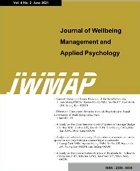- Log In/Sign Up
- E-ISSN2586-6036
- KCI
 E-ISSN : 2586-6036
E-ISSN : 2586-6036
JUNG, Min-Jae
LEE, Jun-Cheol
KWON, Woo-Taeg
Abstract
Purpose: In this study, volatile organic compounds(VOCs) and aldehydes generated from roadside vehicles and other pollutants were measured and analyzed. Research design, data and methodology: As a result of measuring and analyzing three areas near the roadside, Vinyl chloride 0.00 ~ 0.02 ppb, Benzene 2.87 ~ 5.01 ppb. Toluene 4.51 ~ 8.62 ppb, Styrene 0.00 ~ 0.34 ppb, Formaldehyde 8.45 ~ 17.12 ug/m<sup>3</sup>, Acetaldehyde 7.01 ~ 17.64 ug/m<sup>3</sup> were detected. When comparing the analysis results and the 6-month average concentration of the hazardous air monitoring network, the analysis results were about 26 times higher for Benzene, about 5 times for Toluene, and about 3.75 times for Styrene. In the case of vinyl chloride, it was confirmed that it was about 20 times lower than that of the hazardous atmosphere monitoring network. Results: Therefore, it is necessary to reexamine the installation location of the measurement network because people are exposed to pollutants on the actual roadside. It is judged that it is right to build a measurement network that is practically helpful to people by increasing the measurement items in the measurement network.
- keywords
- Roadside, VOCs, Aldehydes, Rush-hour traffic, Hazardous atmospheric measuring network
- Downloaded
- Viewed
- 0KCI Citations
- 0WOS Citations













